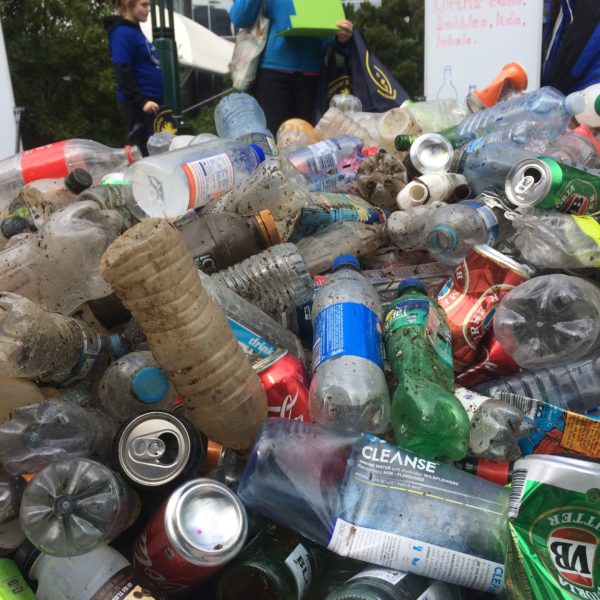How to stop half a trillion bottles polluting our planet each year
If you go to the hospital with a sharp pain in your left shoulder — a well-known indicator of a heart attack — any doctor worth her salt will start by investigating the health of your heart, not just your shoulder.
Similarly, when it comes to addressing the plastics crisis, it’s time we think like doctors and seek solutions to the underlying disease, not just the symptoms. While it’s tempting to think that the solution to plastic pollution lies in cleaning up the plastic from our oceans and beaches, the reality is that more would just pour in every year. Until we ‘turn off the tap’ — by capturing plastics before they enter the ocean and reducing our reliance on single-use plastics altogether — we’ll just be treating the symptom.
Last month, Story of Stuff community members joined almost 10,000 people around the world to pick up 187,000 pieces of plastic from the environment and document which companies produced it. This herculean task, known as a Brand Audit, was organized under the banner of the global #breakfreefromplastic movement to help us learn more the sources of plastic pollution.
What we found confirmed our suspicions: the second most commonly found item was single-use plastic bottles, which pushed Coca-Cola, Pepsi and Nestle, the world’s largest bottler of water, to the top of our global polluter’s list. One bottle of Coke was even found in the Pacific garbage patch, thousands of miles from any land!
What’s striking about this is that most plastic bottles are made from PET, one of the few plastics that actually holds value because it can be sold and recycled into the next generation of bottles instead of using more virgin plastic resin. We also know from new research that when PET is left exposed to the elements, it releases high volumes of methane — a powerful greenhouse gas that accelerates climate change.
So if plastic bottles hold value when we capture them and pollute our environment when we don’t, what’s holding us back?
The good news is there’s a ready-made, proven solution for recovering and recycling bottles: container deposits. They work by adding a small deposit of around 10 cents (or the equivalent in your currency) to the price of a plastic bottle at the point of purchase, which is repaid on return to a ‘reverse vending machine’ (check them out here).
The principle is simple: by incentivizing customers to return bottles with a deposit, return rates increase. When the best models are followed, such as in places like Oregon, Germany, and Norway, over 90% of the bottles are recovered! That’s enabled the recovery and recycling of literally billions, if not trillions of bottles around the world. To put that into perspective, if you connected every bottle and can that’s been redeemed by the container deposits in effect in the 10 US states alone, they would reach the Sun, and stretch back to earth again!
So why isn’t this no-brainer already in place? Widespread adoption has been ferociously attacked by, you guessed it, the beverage industry. But times are changing, the world is waking up to the plastics crisis and with one million plastic bottles produced every minute (that’s over 16,000 per second!), the status quo isn’t compatible with keeping our life-supporting ecosystems alive. The shift has already begun with container deposit legislation sweeping across Australia and Europe as part of a bigger effort to crack down on single-use plastics.
The typical industry response is the obscure line that bottle drops ‘aren’t the right approach,’ favoring everlasting tweaks to the black hole of curbside recycling. But curbside recycling can’t recycle what it doesn’t receive. And this is typically the case for bottles, which are by nature consumed ‘on the go,’ ending up in the trash at best and littered at worst.
Some of the people I speak to insist they simply won’t buy plastic bottles. Individual actions like these move us in the right direction, but not soon enough. In a world that will consume half a trillion plastic bottles annually by 2020, we need to develop systemic solutions as well as behavioral ones.
By implementing high-quality container deposit systems, along with complementary legislation setting a minimum quantity of recycled content into packaging, we can virtually make plastic bottle pollution a thing of the past. The bonus is that if we are successful, we will reduce our demand for plastic, sending a message to the sprawling petrochemical industry that the future’s not plastic.
We need to start by calling on the beverage industry to recognize the huge environmental impact their products have, and the role they can play in preventing plastic pollution by supporting container deposit policy. Sign up here to amplify that message and help us drive forward our campaign online and in your community.





